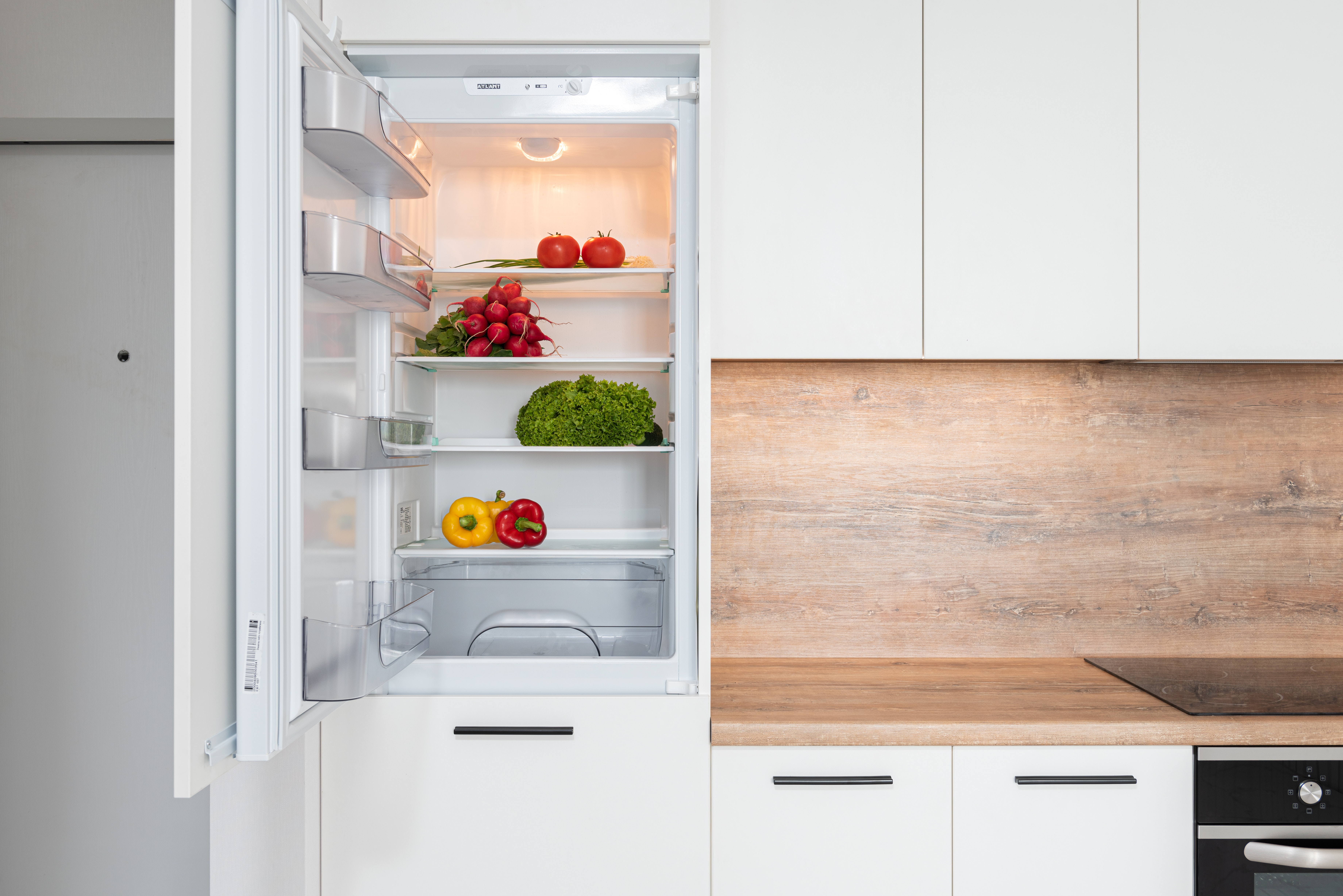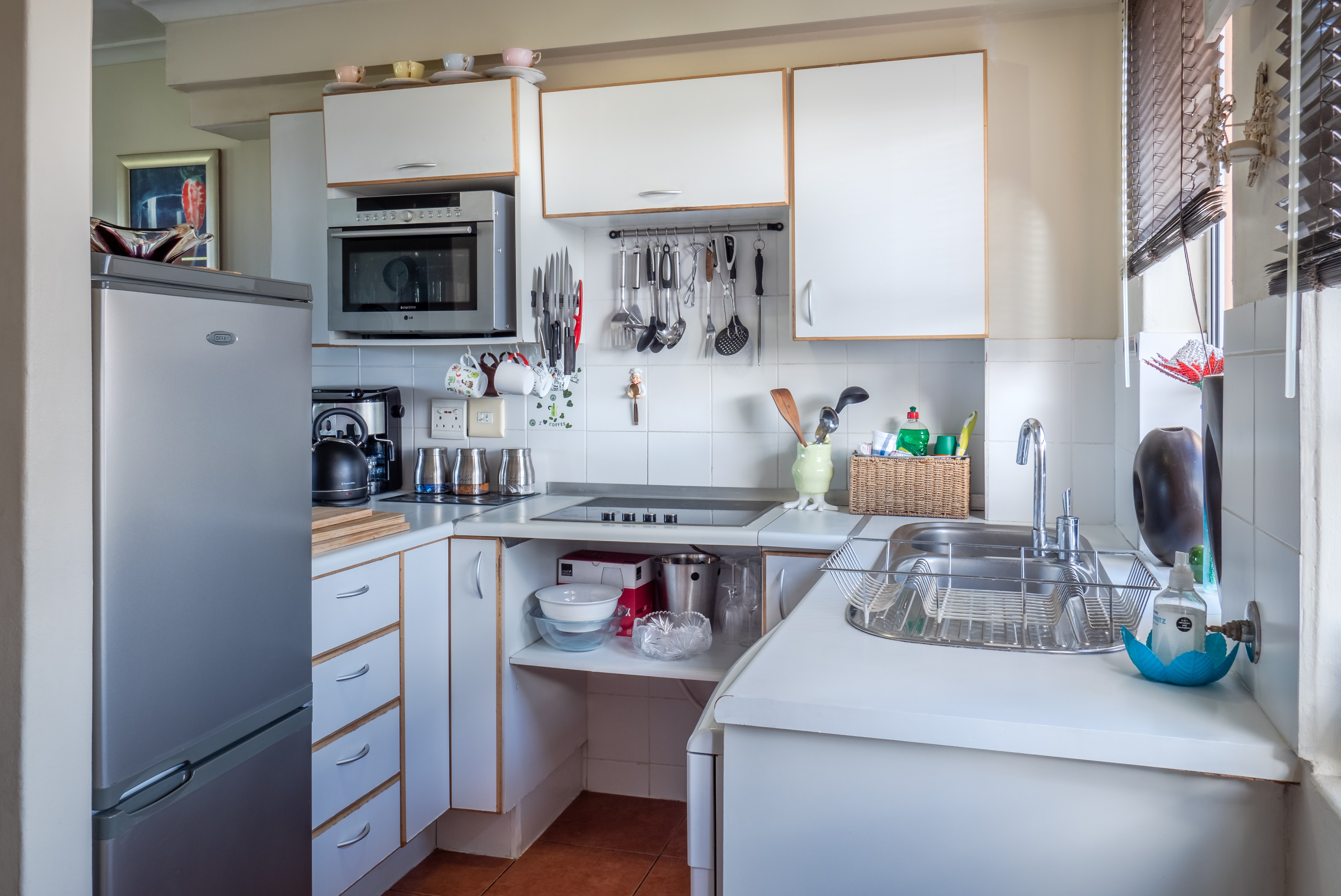The GE Cafe Series refrigerator now with a built-in Keurig brewer.
Even people who don’t love to cook seem to get excited about high-tech kitchen appliances. Combine that with people who love coffee, and I’m pretty sure that covers nearly the entire population. Or at least all of us geeks here. If you count yourself among us, you’ll be interested to know that GE and Keurig have teamed up to release a first-of-its-kind refrigerator with a single-serve brewing system built right into the door.
Crazy, right?
The new GE Cafe French door refrigerator is an evolution of a previous model with a hot water dispenser built in. I love the idea of being able to make hot drinks on demand, since I’m not a hot water with lemon kind of girl. Apparently, GE Cafe fridge owners felt the same: Their repeated requests to turn the hot water dispenser into a tea or coffee dispenser inspired the partnership between GE and Keurig.
 While I haven’t tried the fridge myself yet, I have to admit that my first thoughts as a parent went right to safety. I kept imagining that my little one would burn himself and my older son would have wayyyyy too easy access to hot chocolate. However given the hot water dispenser in the existing model, I’m going to guess that scalded little hands haven’t been a major issue. But if you’re seriously considering this fridge, I’d definitely look into child safety features. The lock control button on the console seems like a good indicator that GE has looked into it too.
While I haven’t tried the fridge myself yet, I have to admit that my first thoughts as a parent went right to safety. I kept imagining that my little one would burn himself and my older son would have wayyyyy too easy access to hot chocolate. However given the hot water dispenser in the existing model, I’m going to guess that scalded little hands haven’t been a major issue. But if you’re seriously considering this fridge, I’d definitely look into child safety features. The lock control button on the console seems like a good indicator that GE has looked into it too.
As for having hot chocolate on tap, Willie Wonka style, you might want pretend those Swiss Miss K-Cups don’t exist; at least if you want the Keurig to be all about your morning joe.
The next question I had was about the waste factor of K-Cups in general, since I’m new to that world. If you didn’t know (I didn’t!), K-Cup pods are not recyclable through municipality programs, and Keurig doesn’t currently offer their own recycle program–though they do say that they are working on one. Which makes sense considering how huge the market is.
In the meantime, our editor Liz found these awesome refillable Ekobrew cups that work with some K-Cup brewers. There are also biodegradable coffee pods from San Francisco Bay Gourmet Coffee. I’m really hoping either of these options will be compatible with this fridge’s Keurig brewer, since I know how much busy families all love our kitchen time-savers, and we’re sometimes willing to turn a blind eye to the eco trade-offs of our choices. So whatever GE can do to help us on that front would be great.


